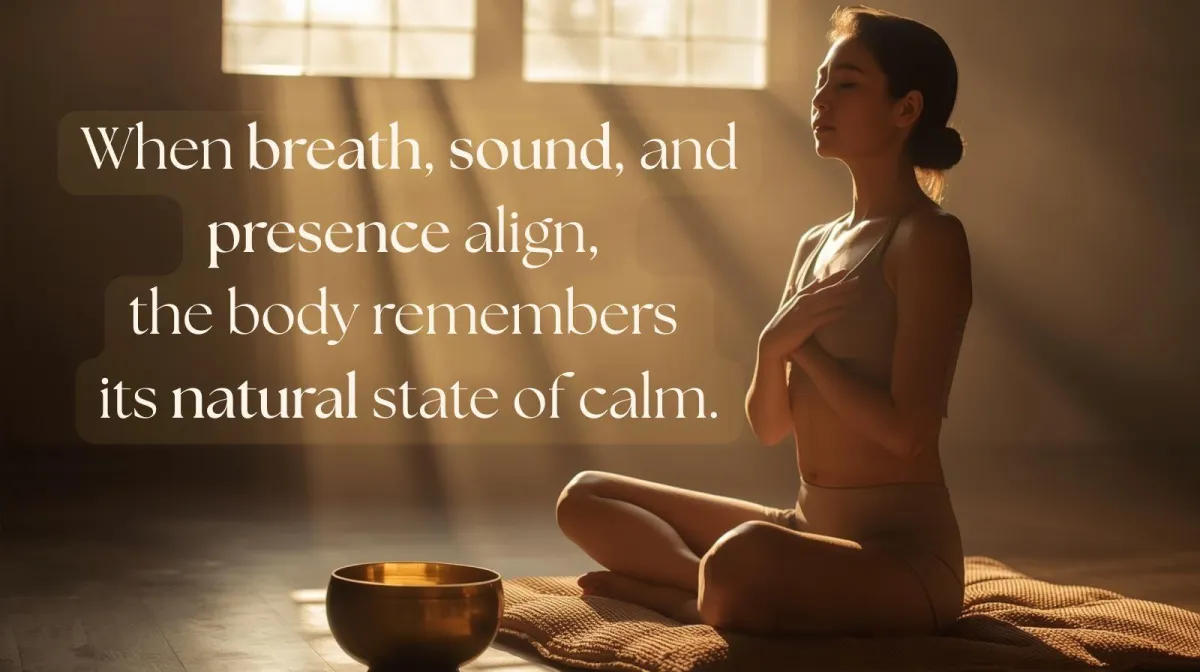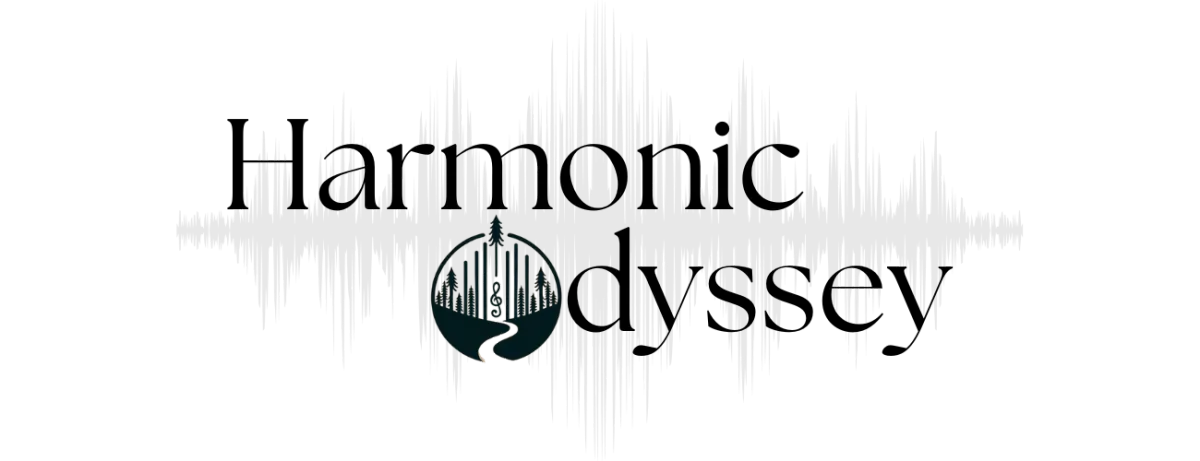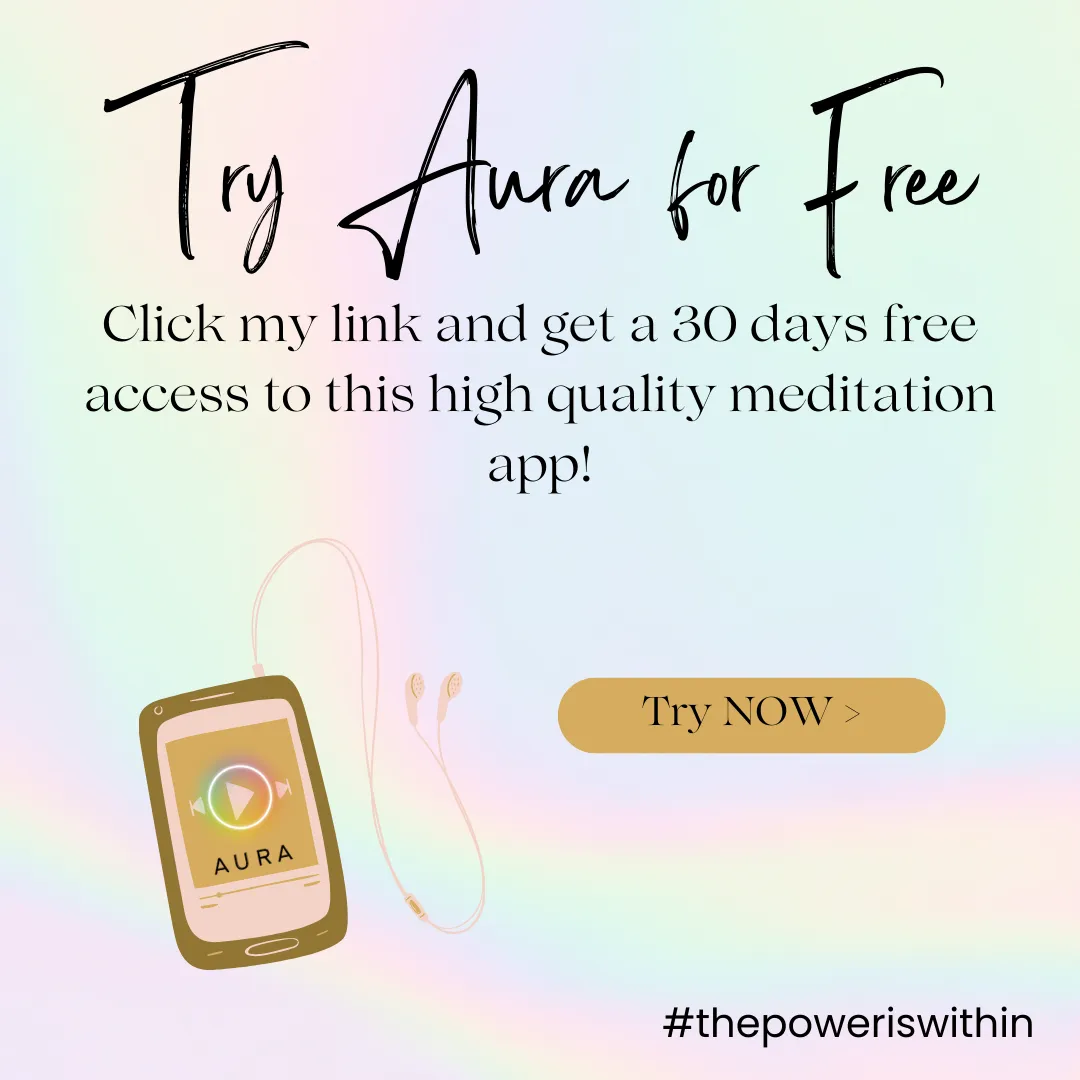
Breath, Sound & Presence: The Triple-Threat Against Chronic Stress
Introduction: The Triple Threat Against Chronic Stress
Chronic stress doesn’t just live in your mind—it lives in your breath, your inner vibration, and your absence in the present moment. In my experience guiding people through meditation and holistic wellness, the combination of breath, sound, and presence forms a powerful “triple threat” against stress.
In this post, you’ll learn how to integrate all three, explore practical techniques, see the science behind them, and discover ways to experience the full method in my upcoming workshop on October 27th.
🎥 Internal link: For sound-based practices, check out my post on [Intuitive Singing: Finding the Voice Within].
Why the Triple Threat Works
Stress affects multiple systems: your nervous system, muscles, hormones, and mental focus. Addressing only one area (like just meditating or just listening to music) leaves other channels unbalanced. Combining breath, sound, and presence creates holistic resonance, tackling stress on multiple levels:
Breath regulates the autonomic nervous system.
Sound affects brainwaves, vibration, and emotional patterns.
Presence anchors your awareness, interrupting reactive stress loops.
This synergy produces deeper, more lasting stress relief.
1. Breath: The Foundation of Stress Relief
Breath is your first lever against stress. Intentional, diaphragmatic breathing activates the parasympathetic nervous system, reduces cortisol, and promotes relaxation.
Techniques and Evidence
Deep belly breathing, inhaling through the nose and exhaling slowly, is recommended by the NHS.
Box breathing: inhale 4, hold 4, exhale 6, hold 4—effective for calm and focus.
4-7-8 Technique: inhale 4, hold 7, exhale 8. Slowing the exhale signals safety to the nervous system (Verywell Mind).
Quick Breath Practice (2–3 minutes)
Sit comfortably with a straight spine.
Place one hand on your belly and one on your chest.
Inhale 4 counts, letting the belly rise first.
Exhale 6 counts, feeling the belly fall.
Repeat, returning your attention gently if the mind wanders.
2. Sound: Vibrational Healing for Stress
Sound is a direct pathway to calm. It can entrain your brainwaves, influence nervous system activity, and elevate mood.
Evidence-Based Practices
Singing bowls & tone therapy: reduce anxiety, improve mood (PMC Study).
Music mindfulness: shown to improve autonomic flexibility and heart rate variability (Frontiers in Neuroscience).
Vocal toning & humming: creates internal vibration that soothes nervous system.
Quick Sound Practice
Pair your exhale with a gentle hum (“mmm”) or tonal sound.
Feel vibration move through chest and skull.
Return to silence and repeat for 3–5 minutes.

3. Presence: Anchoring Awareness
Presence is conscious awareness—the anchor behind your breath and sound. Cultivating presence interrupts habitual stress reactions, allowing you to respond instead of react.
Practices to Cultivate Presence
Anchor to senses: Focus on tactile sensations and subtle vibrations during meditation.
Label thoughts: Acknowledge wandering thoughts (“thinking”) and return to breath or tone.
Micro-moments: Pause 10 seconds to notice your body, breath, or environment during the day.
Presence deepens the impact of both breath and sound practices, embedding stress relief into your nervous system.
Putting it all together: A mini session you can do now
Let me guide you through a 5-minute integrated mini practice:
Settle: Sit comfortably, back straight, eyes softly closed or half-open.
Breath: Begin with 1 minute of diaphragmatic breathing (e.g. inhale 4, exhale 6).
Sound entry: On your next exhale, hum or tone (whatever feels natural), sustaining for the full out-breath.
Presence: As you continue breath and tone, shift awareness to the vibration — feel how it moves through your skull, chest, limbs. Let it anchor you.
Return: Gradually let the tone fade, return to silent breath, and rest in presence for 30–60 seconds.
Reflect: Notice subtle changes: in your body, mind, mood.
Even this short practice can reset your nervous system, loosen tension, and prime you for deeper work.
Why this matters: The toll of chronic stress & how the triple threat helps
Chronic stress isn’t just “feeling busy” — over time, it rewires our nervous system, weakens immunity, disrupts sleep, and creates a cascade of hormonal and metabolic imbalance. In modern life, it’s one of the biggest hidden health risks.
What’s powerful about the breath + sound + presence approach is its holistic reach:
It works directly on physiology (via breath and entrainment).
It addresses neural and mental patterns (via presence).
It cultivates vibrational resilience (via sound).
It is accessible — you don’t need props, expensive instruments, or hours of silence.
Think of it as a compact, elegant, integrated toolbox — one you can carry with you wherever you go.
Questions to awaken reflection (feel free to answer in comments or mirror internally)
Which of the three — breath, sound, or presence — feels the most “alive” or resonant to you right now?
When during your day could you insert a 1–2 minute version of this practice (even at your desk, in a bathroom, or in the car)?
How might life shift if stress became something you flow through rather than accumulate?
I’d love to hear reflections, experiences, or blocks you encounter as you practice. Leave a comment or drop me a note — your journey enriches all of us.

Harmonic Reset Method: Breath, Sound & Presence as a Gateway
Invitation: Experience the full method (and community)
The above is just a taste — a doorway into what’s possible when breath, sound, and presence are woven into a deeper, integrated method. If you’re ready to move beyond individual tools and embody transformation, join me in the “Harmonic Reset” workshop on October 27th. In that space, we will journey deeper into the triad, cultivate daily rituals, and tap the power of our collective resonance.
[Reserve your spot for Harmonic Reset →]
I truly can’t wait to guide you.
May your breath be generous, your sound sacred, and your presence luminous.
In resonance,
Amandine
References & Further Reading
Internal link & further reading
If you haven’t yet, check out my post on [Intuitive Singing: Finding the Voice Within] — it’s a beautiful companion to the sound practices here, especially if singing, toning, and voice work call to you.
To ground your curiosity in science, here are some thoughtful reads:
Breathing exercises for stress — NHS guide to simple, evidence-based breathing practices nhs.uk
Sound interventions for mental stress — PMC overview of empirical sound therapy studies PMC
Music mindfulness and autonomic regulation — Frontiers study on music, stress, HRV Frontiers
Effects of singing bowl meditations — Goldsby et al. (PMC) on mood, anxiety, pain outcomes PMC
Navigation
© 2025 Harmonic Odyssey by Amandine LRH - A Greener Life LLC, All Rights Reserved.








